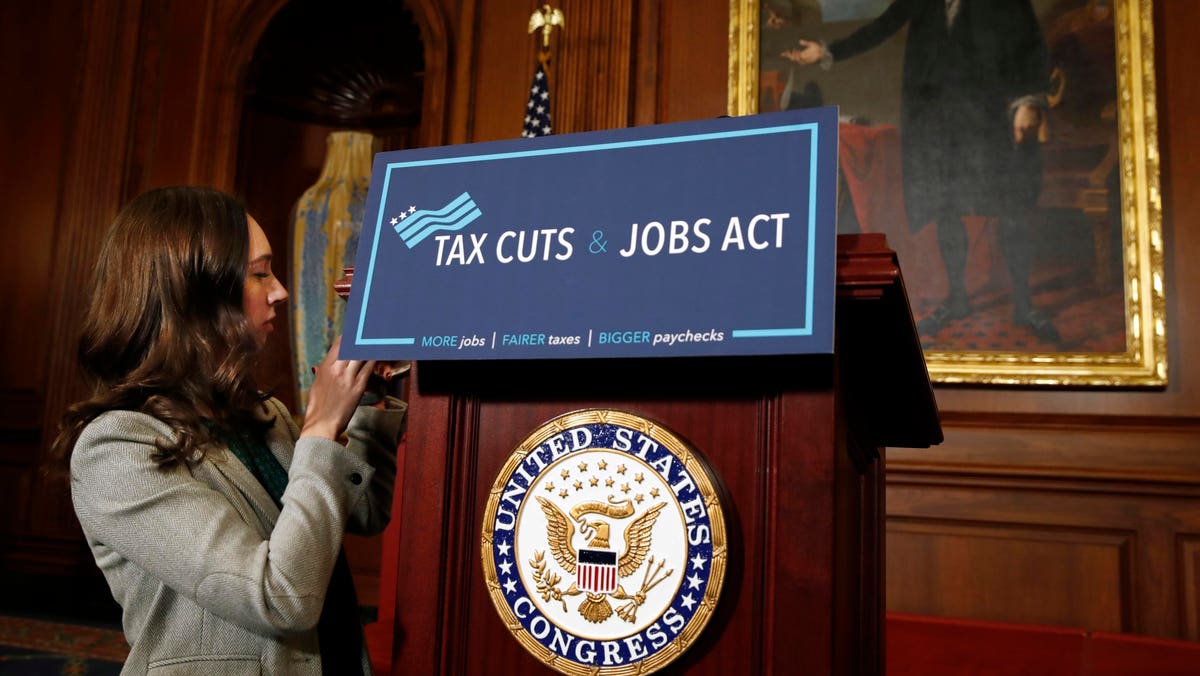As originally enacted, many Tax Cuts and Jobs Act provisions were set to expire, phase out, or otherwise change between 2017 and 2027 in ways that mostly increase taxes. The Coronavirus Aid, Relief, and Economic Security Act mitigated some of these changes, while the American Rescue Plan Act and the Inflation Reduction Act (IRA) generally left them intact.
The TCJA (P.L. 115-97) passed on December 22, 2017. The CARES Act (P.L. 116-136) passed on March 27, 2020. The ARPA (P.L. 117-2) passed on March 11, 2021. Finally, the IRA (P.L. 117-169) passed on August 16, 2022.
TCJA
Most TCJA provisions took effect in tax years beginning after December 31, 2017, except for the section 965 transition tax, which applied only to the last tax year before January 1, 2018. However, taxpayers that elected the eight-year installment plan will have compliance obligations through 2024.
BEAT and Investment Incentives
The base erosion and antiabuse tax increased in 2019 from 5 percent to 10 percent, where it will remain until 2025. After 2025 it will rise to 12.5 percent (see Table 1).
Table 1. BEAT: Section 59A
Banks and registered securities dealers apply a BEAT rate that is 1 percentage point higher than the regular rate. Taxpayers will no longer be able to offset BEAT with research and development, low-income housing, or renewable-energy-related tax credits after 2025.
Several TCJA business investment tax incentives began to scale down in 2022 and 2023. After 2021 the section 163(j) business interest deduction became less favorable. The deduction is still limited to 30 percent of adjusted taxable income, but it has been lowered to earnings before income tax (formerly earnings before income tax, depreciation, and amortization).
At the end of 2021, the immediate R&D deduction under section 174 ended. R&D costs are now deducted over five years.
Section 168(k) business investment full expensing gradually began phasing out after 2022 and will be gone by 2027. In 2023 taxpayers will be able to deduct 80 percent of their investment costs, falling by 20 percent each successive year. It will expire entirely at the end of 2026 (see Table 2).
Table 2. Section 168(k) Deduction Percentage
The 20 percent deduction for noncorporate taxpayers in section 199A(i) will expire after 2025.
GILTI and FDII
By 2026, global intangible low-taxed income and foreign-derived intangible income provisions become less favorable. The effective tax rate on GILTI is scheduled to increase from 10.5 percent to 13.125 percent in 2026, with the section 250 deduction dropping from 50 percent to 37.5 percent (see Table 3).
Table 3. GILTI: Sections 951A and 250
The effective tax rate on FDII is scheduled to increase from 13.125 percent to 16.406 percent in 2026, and the section 250 deduction decreases from 37.5 percent to 21.875 percent after 2025. The FDII rate will remain higher than the GILTI rate (see Table 4).
Table 4. FDII: Section 250
Several TCJA individual income tax changes will expire after 2025 and return to their pre-TCJA status. The TCJA front-loaded most of the tax relief into the 2018-2022 period, while the later years generally dial back corporate and individual benefits but increase international taxes.
CARES Act
The CARES Act modified the TCJA’s interest and loss deductibility provisions to temporarily make them more favorable. Also, its Paycheck Protection Program provided forgivable loans to U.S. businesses and excluded the debt forgiveness from taxable income.
Interest
In 2020 the CARES Act increased the amount of interest deductible under section 163(j) from 30 percent to 50 percent of adjusted taxable income, which continued to be defined as earnings before interest, depreciation, and amortization for tax years 2019 and 2020. Starting in 2021, the percentage of deductibility shifted back to 30 percent.
Losses
NOLs
Under the TCJA, net operating losses created for tax years ending after December 31, 2017 may not be carried back under section 172. They may be carried forward indefinitely but are limited to 80 percent of taxable income.
The CARES Act provides a five-year NOL carryback provision available for NOLs created in 2018-2020 and permits unused NOLs (after the five-year carryback) to be carried over indefinitely and applied against 100 percent of future taxable income from 2018 to 2020. After 2020 unused NOLs may be applied toward 80 percent of future taxable income in accordance with the TCJA.
Excess business losses
The TCJA disallowed deduction of excess business losses by noncorporate taxpayers under section 461(l) for tax years beginning after December 31, 2017, and ending before January 1, 2026. Taxpayers were generally required to carry forward losses in excess of $250,000 ($500,000 for joint filers) as NOLs. The carryovers were limited to 80 percent of net income for tax years beginning after December 31, 2017.
The CARES Act deferred the rule’s effective date to tax years beginning after December 31, 2020, so that taxpayers could recognize those losses for the 2018-2020 tax years. It also removed the 80 percent limitation for tax years beginning before January 1, 2021, but retained it for tax years beginning January 1, 2021, and later.
ARPA and IRA
The ARPA extended the expiration of the TCJA’s unfavorable excess business loss rules to years after December 31, 2026, and the IRA extended them further through December 31, 2028. The IRA also imposes a 15 percent corporate minimum tax in section 55 and a 1 percent excise tax on stock repurchases in section 4501, both effective for tax years after December 31, 2022.
On the other hand, the IRA extends the ARPA’s expanded health insurance premium tax credits through the end of 2025 and provides tax credits for energy-efficient home improvements and clean vehicle purchases, mostly through 2031 and 2033.
Read the full article here









